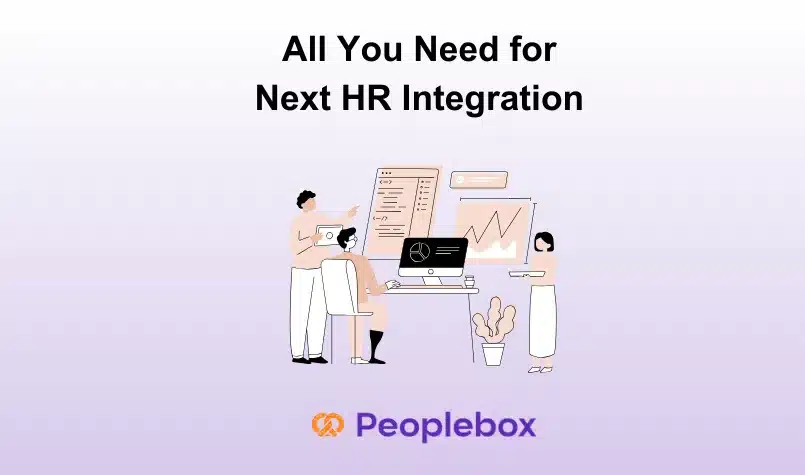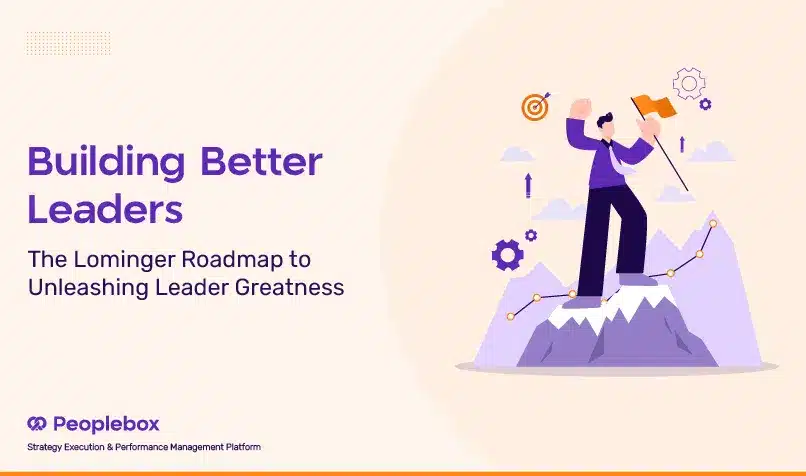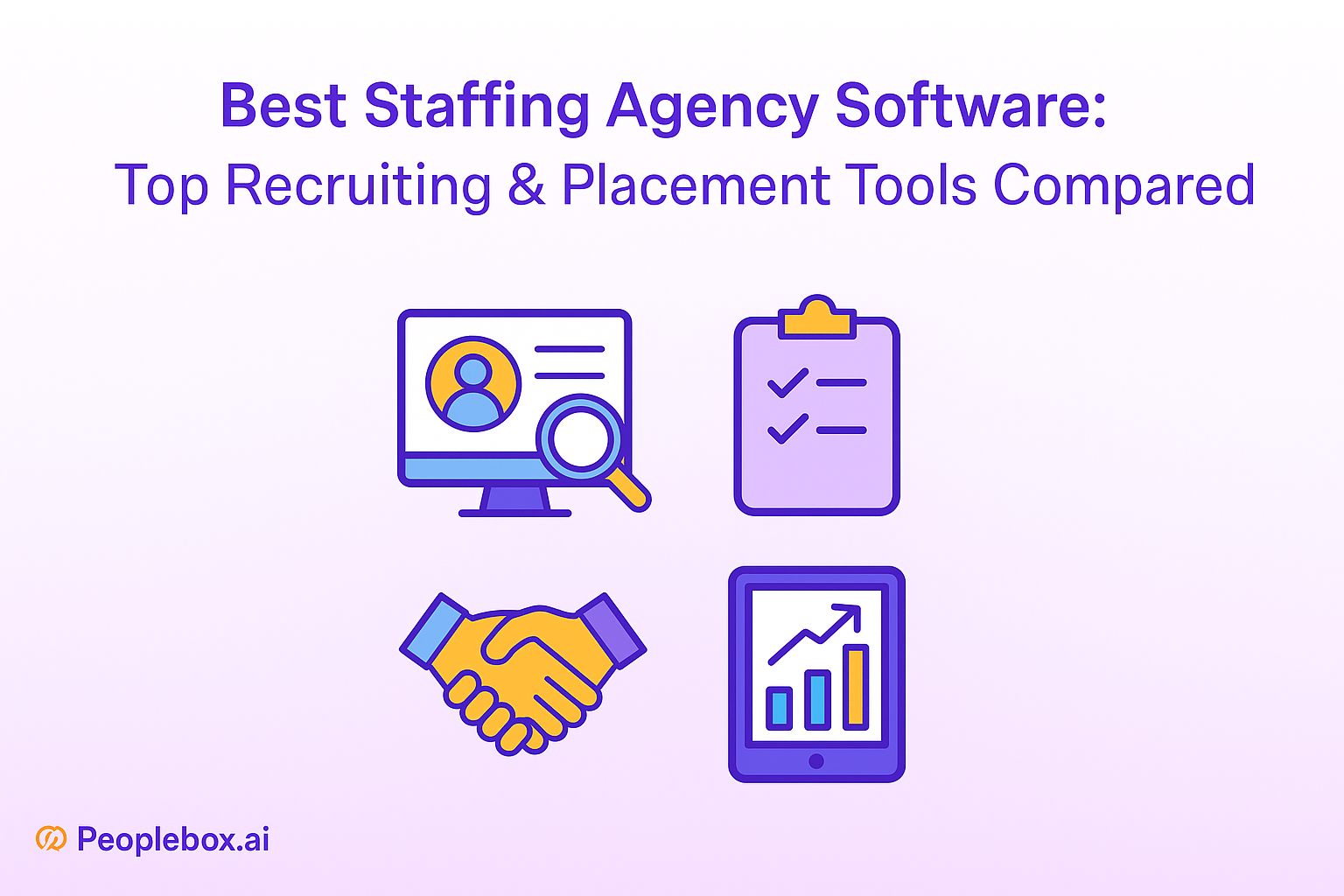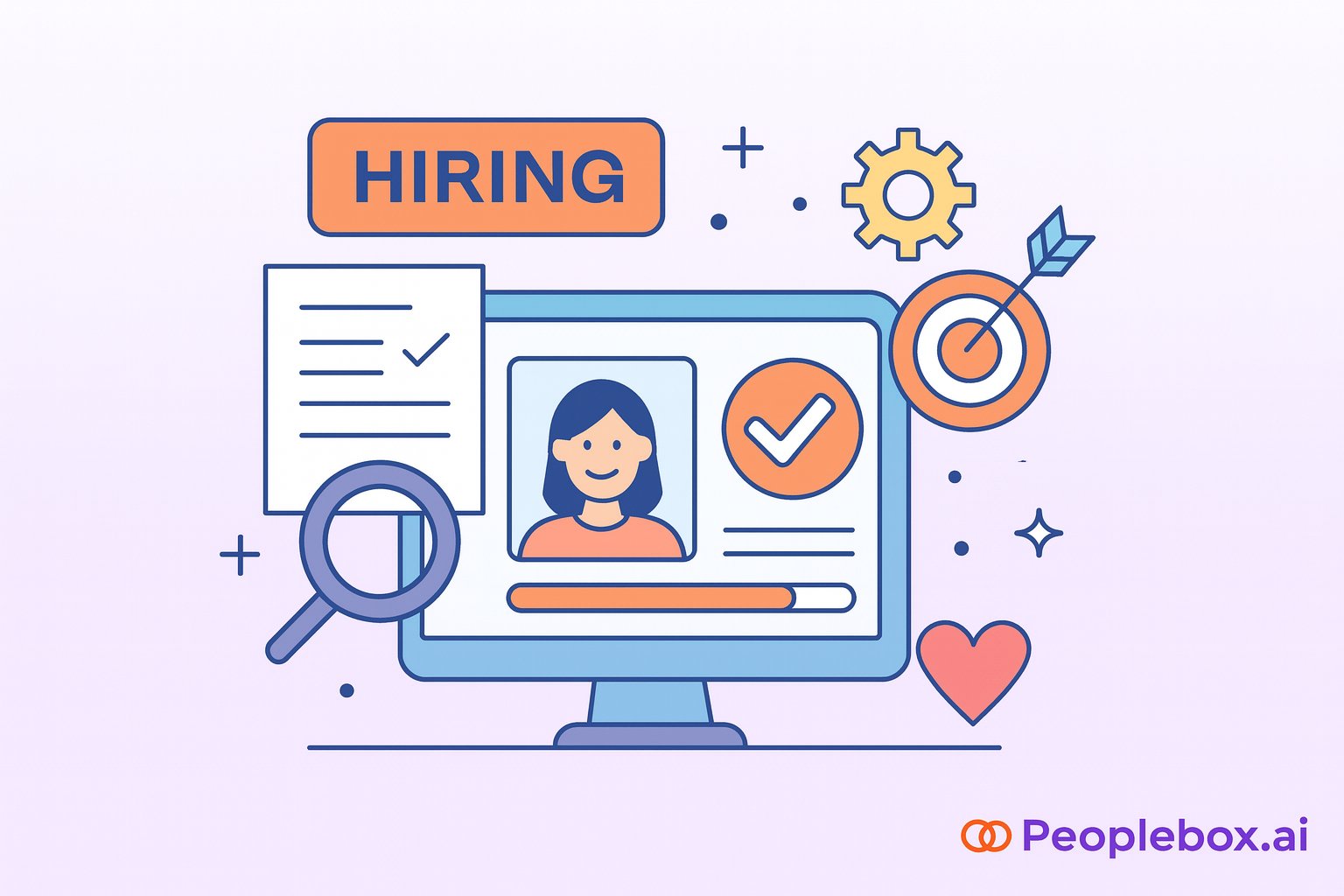When done right, HR integration can transform your workplace dynamics & culture, simplify operations, and help you drive better business outcomes.
Well, we have proof!
Take CometChat, an enterprise communication platform provider that faced significant HR challenges like a lack of standardization of review tools and increased HR admin load. By implementing an integrated performance management system with the help of Peoplebox, they achieved remarkable results: 98% review completion rate, 100% participation, and 90% reduction in administrative workload.
The impact is equally compelling industry-wide: 80% of HR professionals report that integrating HR technologies positively influences employee attitudes toward their company. So, HR integration isn’t just about streamlining processes—it’s about creating a more engaged, productive, and satisfied workforce.
In this article, we’ll break down:
- The building blocks of HR integration
- Why do you need it?
- Tools that make it happen
- Tips to actually implement it
So, let’s explore how HR integration is reshaping the future of work, one data point at a time.
What is HR Integration?
HR integration means the seamless incorporation of HR-related data, procedures, and functions into an organization’s broader business operations. This requires coordinating HR efforts with overarching company objectives and integrating HR platforms with those of other divisions, including accounting, payroll, and talent management.
HR integration promotes communication between human resources and other business areas and streamlines administrative duties. It increases data accuracy—all of which contribute to an overall increase in organizational performance and efficiency.
Benefits of HR Integration
HR integration has many benefits that can improve your company’s operations and how employees feel about working there. Let’s have a look at the main advantages:
Streamlines HR operations: HR integration simplifies complex processes by automating payroll, benefits administration, and employee onboarding tasks. It reduces the need for manual entry, which not only speeds up operations but also reduces the potential for errors. For instance, linking time-tracking software directly to payroll ensures employees are compensated accurately for their hours worked. The result is minimized discrepancies and fewer administrative headaches.
Offers access to real-time data: With integrated HR systems, managers gain immediate visibility into crucial HR metrics, from performance evaluations to attendance records. With this, you can quickly identify top performers, struggling employees, or emerging trends, enabling proactive decision-making.
Improves reporting: Integrated HR systems come equipped with robust reporting tools to generate detailed reports with just a few clicks. You can reduce the time spent on report generation so your HR teams can focus on data analysis and strategic planning rather than spreadsheet manipulation.
Provides data accuracy: By reducing manual data entry, integration minimizes errors that could lead to serious issues like incorrect salary offers or mishandled employee departures. Additionally, integrated systems help standardize data management practices, which enhances security and compliance with data protection regulations.
Prevents data silos: Integrated HR systems ensure that information flows freely across different departments, eliminating data silos that can hinder effective communication. So, all departments have access to the same data, which is particularly important for aligning HR activities with overall business objectives.
Key Areas of HR Integration

Effective HR management creates an environment where employees thrive and drive organizational success. Whether you’re a small business owner refining HR strategies or a new HR professional, understanding these key areas is essential. Let’s explore how integrating HR systems can enhance these critical functions.
Recruitment and onboarding
Integrating recruitment and onboarding processes can improve your talent acquisition strategy. Companies investing in structured onboarding see an 82% increase in new hire retention and a 70% boost in productivity. That’s a game-changer for your bottom line.
But here’s the challenge: full integration of a new employee can take up to eight months, with initial provisioning alone consuming about 10 hours of admin work. That’s where HR integration proves helpful. HR professionals and new recruits can self-serve by centralizing hiring tasks through integrated systems, saving time and reducing errors.
💡Take Google’s approach: they improved new hire productivity by a month simply by automating an email checklist to managers before orientation.
Integrated onboarding software can streamline every step, from offer acceptance to first-day setup. It ensures consistent communication, automates paperwork, and provides a smoother transition for new hires.
The result? Faster time-to-productivity and improved employee experience from day one.
Performance management
Integrating performance management systems has the potential to completely transform the way firms analyze, nurture, and retain their team members. Ongoing feedback systems are replacing annual performance evaluations, and the integration of HR is crucial in driving this change.
Businesses that regularly provide employee feedback to their staff see 14.9% less employee turnover than those that do not, per a Gallup survey.
💡 Let’s go back to Google. They use an integrated system that combines OKR (Objectives and Key Results) goal-setting, employee satisfaction surveys, regular performance check-ins, annual feedback surveys, and annual reviews.
By integrating OKRs with other performance data, Google promotes transparency, alignment, and engagement across the organization.
You can make more informed decisions about promotions, raises, and development plans by integrating performance data with other HR functions like compensation and learning.
Learning and development
76% of Gen Z sees L&D as essential. So do 61% of millennials, 56% of Gen X, and 55% of baby boomers.
What does this mean for your organization? Integrating L&D into your HR ecosystem isn’t just a nice-to-have; it’s a must-have.
Let’s say your performance management system flags a skill gap. Instantly, your L&D platform suggests relevant courses. Your employee completes the training, and their progress automatically updates in their career development plan. That’s how an L&D integration works.
💡 For instance, Amazon’s Technical Academy demonstrates how integrated L&D can foster career mobility. Their Associate2Tech program enables front-line employees to transition into technical roles, regardless of prior IT experience.
An integrated L&D approach allows for
- Real-time skill gap analysis,
- Automated course recommendations based on performance data, and
- Seamless tracking of learning outcomes.
This improves employee performance and work quality and significantly impacts retention rates.
Compensation and benefits
Companies embracing compensation management software can save a whopping $46,000 annually.
It’s not all about savings. Accuracy matters too. In-house payroll systems have an error rate of 11.4%, nearly double that of integrated third-party software at 6.1%.
This can break employee trust and even impact compliance. By integrating compensation and benefits systems, you’re
- Minimizing errors
- Ensuring compliance
- Boosting employee satisfaction
- Saving time and money
💡Take Microsoft’s Dynamics 365 Human Resources Payroll integration API, for example. By integrating payroll processing with HR data in a smooth manner it lowers the risks involved with manual data entry.
Remember, a single compensation error can ripple through your organization, affecting team cohesion and overall success.
HR analytics and reporting
When HR reporting and analytics are well-integrated, they can take raw data and turn it into insights that can drive strategic decision-making. By combining these tools, organizations can monitor key performance indicators, identify trends, and proactively address workforce challenges.
💡 For instance, Hewlett-Packard leveraged HR analytics to tackle high turnover rates in their sales division, uncovering crucial retention factors like the correlation between promotions and salary increases. This data-driven approach saved HP an impressive $300 million.
Now, think about your organization. What could you achieve with integrated HR analytics and reporting?
- Enhance workforce planning
- Optimize talent strategies
- Boost employee engagement
- Streamline compliance
- Improve overall performance
The right integration solution can consolidate your data, generate real-time reports, and provide a comprehensive view of your human capital.
Essential Tools for HR Integration
HR integrations streamline operations across the entire employee lifecycle, from recruitment to exit interviews. By automating routine tasks and managing critical HR functions, these tools free up valuable time for organizational initiatives. Let’s explore five key tools that can transform your HR processes

Human Resource Information Systems (HRIS)
When two or more software tools are integrated with an HRIS, storing, updating, and sharing data becomes much easier. Application programming interfaces, or APIs, are typically used in HRIS integrations. APIs are collections of protocols that let two or more programs “talk” to one another.
How it works:
An HRIS integration typically operates through triggers and actions. A trigger in an HRIS context could be an event like an employee’s eligibility for benefits after 90 days of service. This event would initiate an action — such as sending out benefit enrollment forms via email — facilitated through an integration with the company’s email system.
Through these integrations, HR departments can automate procedures that would normally need human intervention, thus lowering the possibility of mistakes and speeding up response times.
Why is it important?
✔ Automates routine tasks, reducing manual effort and errors.
✔ Maintains data consistency across multiple systems.
✔ Combines data from various sources for comprehensive HR analytics.
✔ Streamlines processes related to data privacy and security regulations.
Applicant Tracking Systems (ATS)
Integration of applicant tracking systems (ATS) involves linking ATS with other software tools to help organizations enhance the functionality and efficiency of talent acquisition and onboarding. By connecting your ATS to other systems, you can automate repetitive tasks, reducing manual effort and errors.
How it works:
ATS integrations typically leverage APIs (Application Programming Interfaces) to exchange data between systems.
For example, you can efficiently organize and access candidate information by establishing a workflow that automatically transfers specific document types (such as resumes) from your ATS to designated folders within the file storage system.
HRIS systems, communication platforms, e-signature tools, background check providers, and IT service management tools are common integration partners for ATS.
Why is it important?
✔ Provides a seamless and positive candidate journey through streamlined communication and processes.
✔ Combines data from various sources to measure recruitment performance and optimize strategies.
✔ Automates background checks and other regulatory requirements.
✔ Facilitates communication and collaboration among hiring teams.
Learning Management Systems (LMS)
A learning management system integration allows your company’s LMS to communicate with other data-gathering and storage applications. By integrating other technologies with your LMS platform, you may facilitate data transmission between systems, which lowers the possibility of human mistakes, increases automation, and boosts productivity.
How it works?
LMS integrations connect your learning platform with other software applications through APIs. This allows for the smooth exchange of data, automation of tasks, and synchronization of information between systems. For instance, integrating your LMS with a single sign-on (SSO) solution enables employees to access multiple platforms with one set of credentials.
Why is it important?
✔ Automates tasks like user provisioning, course enrollment, and performance data transfer through HRIS and CRM systems integrations.
✔ Combines learning data with HR analytics to measure training effectiveness and identify talent development opportunities.
✔ Centralizes user management, content creation, and reporting through integrations with various tools.
✔ Offers a more personalized and engaging learning journey by combining content from various sources.
Performance Management Software
By coordinating employee objectives with organizational goals, performance management systems help human resource professionals spot areas with potential for improvement and implement strategies to boost productivity.
Companies have integrated performance management procedures in place to develop the skills necessary for expansion. These procedures remove departmental boundaries and remove departmental silos. The objective is to make the business run more smoothly by cutting down on inefficient procedures and competing priorities.
How it works?
Performance management software centralizes the performance management process. The platform allows managers and employees to establish clear goals, track progress, and provide consistent feedback.
The software often includes 360-degree feedback, self-assessment, and performance review features. Data is collected and analyzed to generate insights for employee development, talent management, and organizational performance.
Why is it important?
✔ Builds a culture of open communication and development.
✔ Provides data-driven insights for talent management decisions.
✔ Streamlines processes and reduces time spent on administrative tasks.
✔ Ensures employee efforts contribute to organizational success.
✔ Identifies training and development needs based on performance data.
Employee Self-Service Portals
Most full-time US workers (73%) want their employer to provide a self-service HR platform, indicating a growing trend in HR technology towards employee self-service in modern workplaces.
Employee Self-Service Portals are safe online portals that enable staff members to independently manage their personal HR data, conduct self-service activities, or interact with HR procedures.
How it works?
ESS portals operate as online platforms where employees can log in using secure credentials to access various HR services. The portal typically includes modules for managing personal information, time and attendance, benefits enrollment, and accessing company policies and documents. Employees can initiate actions, such as requesting time off or updating contact details directly through the portal, reducing the administrative burden on HR.
Why is it important?
✔ Automates routine HR tasks, freeing up HR staff to focus on strategic initiatives.
✔ Reduces errors in data entry by allowing employees to manage their own information.
✔ Streamlines HR processes, leading to operational cost savings.
✔ Serves as a centralized platform for sharing company news and updates.
✔ Provide HR with valuable data for analysis and decision-making.
Tips for Successful HR Integration from Experts

Scaling businesses need seamless HR integration. But how do you achieve it? We’ve gathered top tips from industry experts to guide you.
Improve collaboration between HR and IT
To keep your business running smoothly, it is critical that all of your HR systems and IT tools work together without a hitch.
At our company, we recognized early that the synergy between HR and IT is crucial, especially as we integrate technology into our hiring processes. To facilitate this, we established a cross-functional team dedicated to the implementation and management of our HR systems, including Toggl Hire. This team works on ensuring that both hardware and software requirements are aligned with HR goals for recruitment and employee management. The benefits were immediate and significant—streamlined recruitment processes, faster turnaround times, and enhanced data security. By having IT directly involved, we also ensured that our systems were scalable and adaptable, key for a growing company like ours. – Alari Aho, the CEO of Toggl.
Map every data field in a precise way
Data field mapping is the most crucial step in system integration. Any disparities that are not rectified before full integration can cause data inconsistencies, corruption, or loss.
Integrating hiring tools into our HR systems was a pretty detailed process. We had to ensure that every data field from our new tools matched precisely with our existing system. First, we made a list of all the data fields in both systems and compared them. We then found and fixed any discrepancies between the fields. In this case, if one system had “Past Jobs” and another had “Previous Employment,” we made sure they were a perfect match. Making a detailed data dictionary helped us stay accurate and consistent. – Eli Itzhaki, the CEO and Founder of Keyzoo.
Make transparent data governance a top concern
As a firm starts to scale, it is wise to set up a transparent data-governance protocol. It involves setting out procedures, roles, and duties for overseeing and preserving data integrity throughout organizations.
In our team, we prioritized transparent data governance during our HR integration. We established clear policies, role-based access controls, and regular audits. For example, during a recent hiring campaign for our customer service team, our integrated applicant tracking system (ATS) efficiently tracked each candidate’s progress while maintaining data integrity. This not only sped up the hiring process but also improved the candidate experience and built trust within our team. – Matt Little, Founder and Managing Director of Festoon House.
Focus on compatibility as you integrate
When choosing tools, compatibility must come first because it makes data management much easier and requires less manual labor.
When we merged with a smaller law firm, we prioritized compatibility to ensure a smooth transition. We paired new hires with existing employees who had similar work styles and values. For instance, we teamed up Sarah, a new attorney, with John, a seasoned lawyer who shared a client-centric approach. This partnership facilitated seamless collaboration, boosting productivity and employee satisfaction. Prioritizing compatibility during HR integration creates a connected and effective team, making transitions and work environments smoother. – David Weisselberger, founding partner at Erase The Case.
Pick open API tools
Give top priority to selecting hiring solutions that come with pre-built integrations or open APIs for your current HR platforms.
We opted for open API tools in the integration projects for our HR to ensure flexibility and ease of connectivity among the different systems. For instance, when integrating our payroll system with the human resource management system, the use of open APIs allowed me to make changes in the integration as per my needs. It facilitated real-time data exchange, reducing manual data entry, hence improving efficiency and accuracy in our HR processes. – Lucas Botzen, and I am an HR Expert & CEO at Rivermate.
Wrapping Up
HR integration is a complex task, but one that offers significant rewards. Consider how streamlined operations might impact your team, what insights better data management could unlock, and how an improved employee experience might boost retention.
Automation and AI integration in HR processes are set to increase by 40%, potentially halving the time spent on administrative tasks. How would you leverage this extra time for strategic planning and meaningful human interactions? The keys to success lie in careful planning, stakeholder buy-in, and adaptability.






